Mysterious Lost City Of The Tairona Hidden In The Jungles Of Colombia
A. Sutherland - AncientPages.com - An unknown ancient city of Buritaca is located in an isolated massif of the Sierra Nevada de Santa Marta, in the northern part of Colombia.
The Tairona Indians built their sophisticated cities on steep mountain ridges, but they did not construct them on their own initiative, according to Cristobal de Molina, the Spanish priest, chronicler, and an outstanding Quechua speaker, who recorded many indigenous, religious beliefs and practices of Inca.

View of the center area of Ciudad Perdida ("Lost City") in north-eastern Colombia. Wanderingstan Own work via wikipedia
However Ecclesiastes 1:4 says that "generations come, and generations go, but the earth lasts forever", and so the remaining paths of Buritaca, its stone roads, turrets, bridges, terraces carved into the mountain side, and countless stairs hidden in a dense jungle of wild greens.
The mysterious 'lost city' - named by the Tairona Indians to 'Buritaca 200' after a nearby river - is covered with dense jungle and occupies a gigantic area consisting of the paved roads and streets.
The area is at least ten times as large as the famous Machu Picchu and is also very reminiscent of it but the only way to reach the place and admire, is either by helicopter or by climbing up some 1,200-1,300 stone steps through dense jungle.
The top platforms of the city are piled one upon another so the only connection with them is through a gigantic maze of stairs.
They are located much higher than the natural roof of the jungle vegetation and cover all steep slopes of the city that was built vertically.
Houses and temples, of which location was matched with the stars, celestial bodies and calendar, stood upon circular stone foundations four to twelve meters in diameter. Exactly 1,200 steps lead up to the terraced temple at the top.
The city with more than six square kilometers linked by ten kilometers of stairways, tracks, 250 artificial terraces and irrigation canals was partially hidden beneath the dense undergrowth. All roads and forest paths were designed in such a way that the locals could always hear visitors approaching.
The whole construction was carefully thought out and meticulously detailed, and whoever the designers of this place were, they were not laymen.
They gave knowledge to the locals and taught stone processing, transport and helped create level fields indispensable for cultivating on steeply graded land.
The Tairona possessed extraordinary powers of working gold, used vegetable juices for the gilding of copper, and applied gold foil to objects made of bone and precious stones. Some of the world’s earliest discoveries have been made in the mountains of Northeastern Colombia and the important gold mining center of Buritaca with its deep roots in prehistory.
See also:
Mysterious Marcahuasi, Peru – One Of The Greatest Puzzles Of Human
PrehistoryInscription On Pokotia Monolith Reveals Sumerians Visited Peru Thousands Of Years Ago
"They work this gold and have the custom of mixing it with copper and silver, and they adulterate it as much as they wish, and so it is of various purities and values," Oviedo (1478-1557), a Spanish historian and writer wrote.
Today, the Kogi and the Sanka Indians - the remnants of the once populous Taironas - still use the stone-paved roads crisscrossing the jungle but they have lost the knowledge on building with stone. Some of these routes lead to cities whose location is a closely guarded secret by the Kogi and other indigenous tribes of the region.
Also, the rich vegetation of Colombia prevents access to this and other mysterious lost cities of South America.
Written by – A. Sutherland - AncientPages.com Senior Staff Writer
Copyright © AncientPages.com All rights reserved. This material may not be published, broadcast, rewritten or redistributed in whole or part without the express written permission of AncientPages.com
More From Ancient Pages
-
 Teaching Is Not Essential For People To Learn How To Make Tools, Study Says
Archaeology | Dec 6, 2015
Teaching Is Not Essential For People To Learn How To Make Tools, Study Says
Archaeology | Dec 6, 2015 -
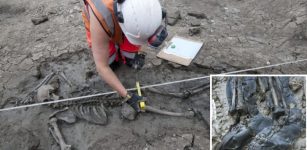 Medieval Mystery Of The Booted Man Found In The Thames Mud
Archaeology | Dec 10, 2018
Medieval Mystery Of The Booted Man Found In The Thames Mud
Archaeology | Dec 10, 2018 -
 On This Day In History: Anders Celsius, Swedish Astronomer And Mathematician Was Born – On Nov 27, 1701
News | Nov 26, 2016
On This Day In History: Anders Celsius, Swedish Astronomer And Mathematician Was Born – On Nov 27, 1701
News | Nov 26, 2016 -
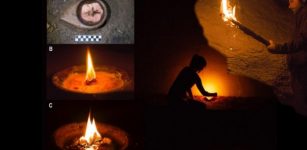 Paleolithic Cave Dwellers And Light They Could Get In Darkness
Archaeology | Jun 21, 2021
Paleolithic Cave Dwellers And Light They Could Get In Darkness
Archaeology | Jun 21, 2021 -
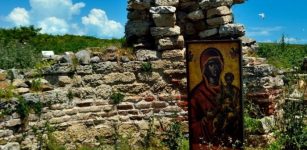 A 1,500-Year-Old Holy Well Probably With Healing Water – Discovered In Bulgaria
Archaeology | Nov 25, 2020
A 1,500-Year-Old Holy Well Probably With Healing Water – Discovered In Bulgaria
Archaeology | Nov 25, 2020 -
 How Neanderthal Language Differed From Modern Human – They Probably Didn’t Use Metaphors
Human Beginnings | May 21, 2024
How Neanderthal Language Differed From Modern Human – They Probably Didn’t Use Metaphors
Human Beginnings | May 21, 2024 -
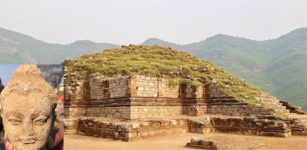 1,800-Year-Old Buddhist Stupa And Relics Discovered Near Bazira, The Ancient City Of Alexander The Great
Archaeology | Feb 11, 2022
1,800-Year-Old Buddhist Stupa And Relics Discovered Near Bazira, The Ancient City Of Alexander The Great
Archaeology | Feb 11, 2022 -
 On This Day In History: England’s Act Against Multipliers Signed Into Law – On Jan 13, 1404
News | Jan 13, 2017
On This Day In History: England’s Act Against Multipliers Signed Into Law – On Jan 13, 1404
News | Jan 13, 2017 -
 Evidence Foreigners Fought Alongside Ancient Greeks Is Challenging Millennia Of Military History
Featured Stories | Jun 1, 2022
Evidence Foreigners Fought Alongside Ancient Greeks Is Challenging Millennia Of Military History
Featured Stories | Jun 1, 2022 -
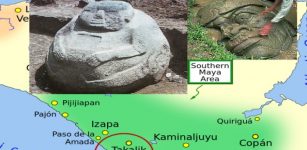 Mysterious Abaj Takalik Of Guatemala And Intriguing Relationship Between Olmec and Maya
Civilizations | Mar 16, 2020
Mysterious Abaj Takalik Of Guatemala And Intriguing Relationship Between Olmec and Maya
Civilizations | Mar 16, 2020 -
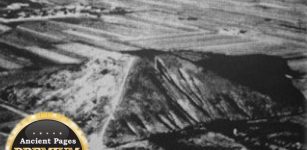 Mysterious Great Pyramid Of China: Almost Totally Unknown Even To Most Chinese
Ancient Mysteries | Oct 10, 2015
Mysterious Great Pyramid Of China: Almost Totally Unknown Even To Most Chinese
Ancient Mysteries | Oct 10, 2015 -
 On This Day In History: One Of The Tallest Women In History – Died – On August 5, 1888
News | Aug 5, 2016
On This Day In History: One Of The Tallest Women In History – Died – On August 5, 1888
News | Aug 5, 2016 -
 Mystery Of The Anglo-Saxon Harpole Burial Continues – New Clues
Archaeology | Dec 14, 2023
Mystery Of The Anglo-Saxon Harpole Burial Continues – New Clues
Archaeology | Dec 14, 2023 -
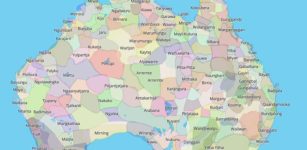 Find Out Which Indigenous Lands You Live On With This Interactive Map Covering The Whole World
Places | Jan 17, 2023
Find Out Which Indigenous Lands You Live On With This Interactive Map Covering The Whole World
Places | Jan 17, 2023 -
 Mysterious Disappearance Of Rome’s Founder Romulus And Strange Vision Of Proculus That United Ancient Romans
Featured Stories | May 26, 2021
Mysterious Disappearance Of Rome’s Founder Romulus And Strange Vision Of Proculus That United Ancient Romans
Featured Stories | May 26, 2021 -
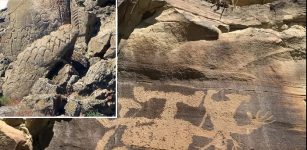 12,000-Year-Old Rock Art In North America – Dating Petroglyphs In The American West
Archaeology | Mar 4, 2022
12,000-Year-Old Rock Art In North America – Dating Petroglyphs In The American West
Archaeology | Mar 4, 2022 -
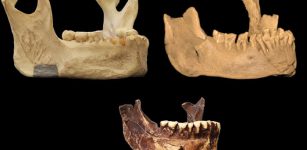 Mysterious Jawbone May Represent Earliest Presence Of Humans In Europe
Archaeology | Dec 7, 2022
Mysterious Jawbone May Represent Earliest Presence Of Humans In Europe
Archaeology | Dec 7, 2022 -
 On This Day In History: Antarctic Explorer Lawrence “Titus” Oates Born – On Mar 17, 1880
News | Mar 17, 2017
On This Day In History: Antarctic Explorer Lawrence “Titus” Oates Born – On Mar 17, 1880
News | Mar 17, 2017 -
 3,000-Year-Old Geoglyphs May Depict The Heavens
Archaeology | Jun 25, 2018
3,000-Year-Old Geoglyphs May Depict The Heavens
Archaeology | Jun 25, 2018 -
 King Ferdinand’s Secret Code Deciphered After 500 Years
Archaeology | Feb 14, 2018
King Ferdinand’s Secret Code Deciphered After 500 Years
Archaeology | Feb 14, 2018


